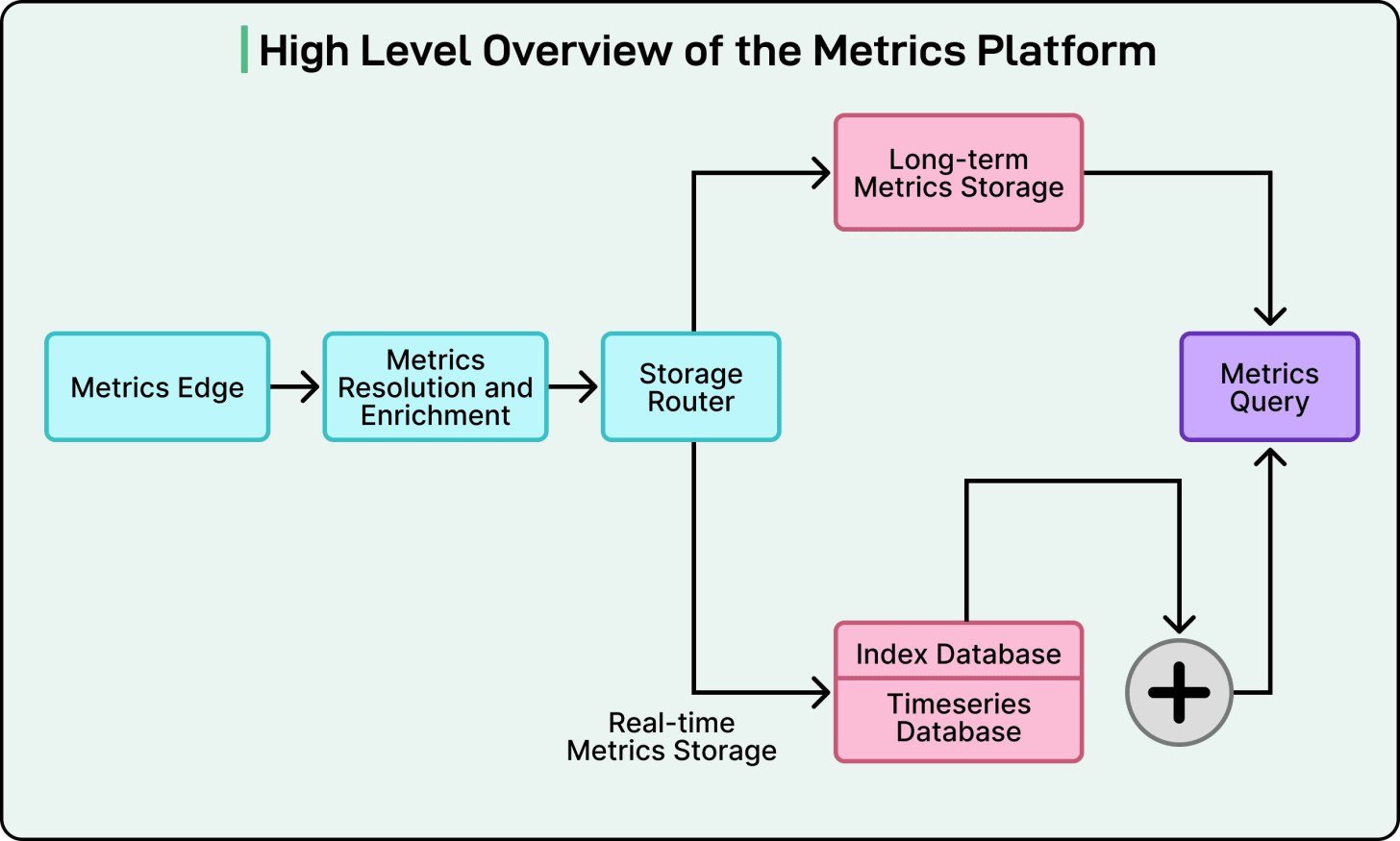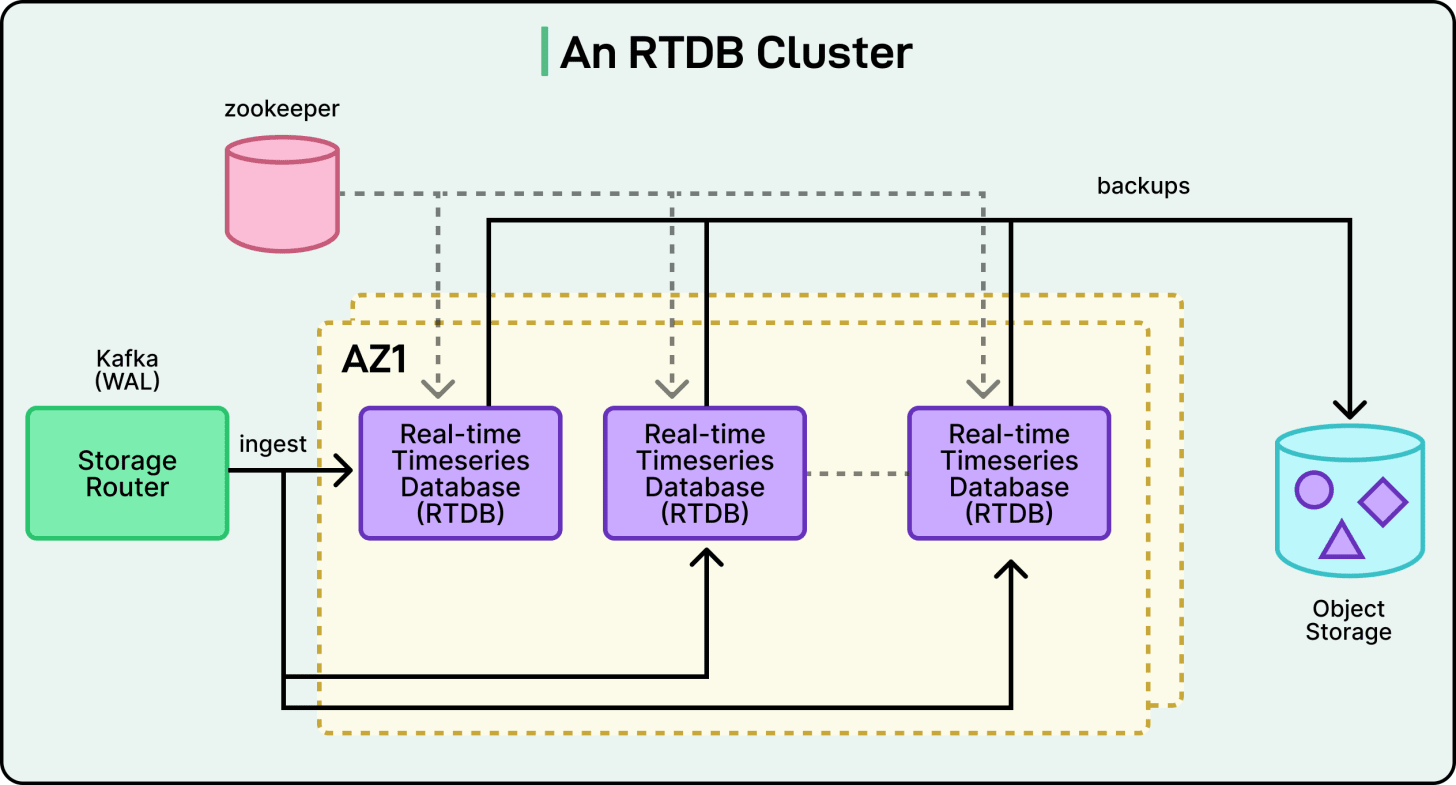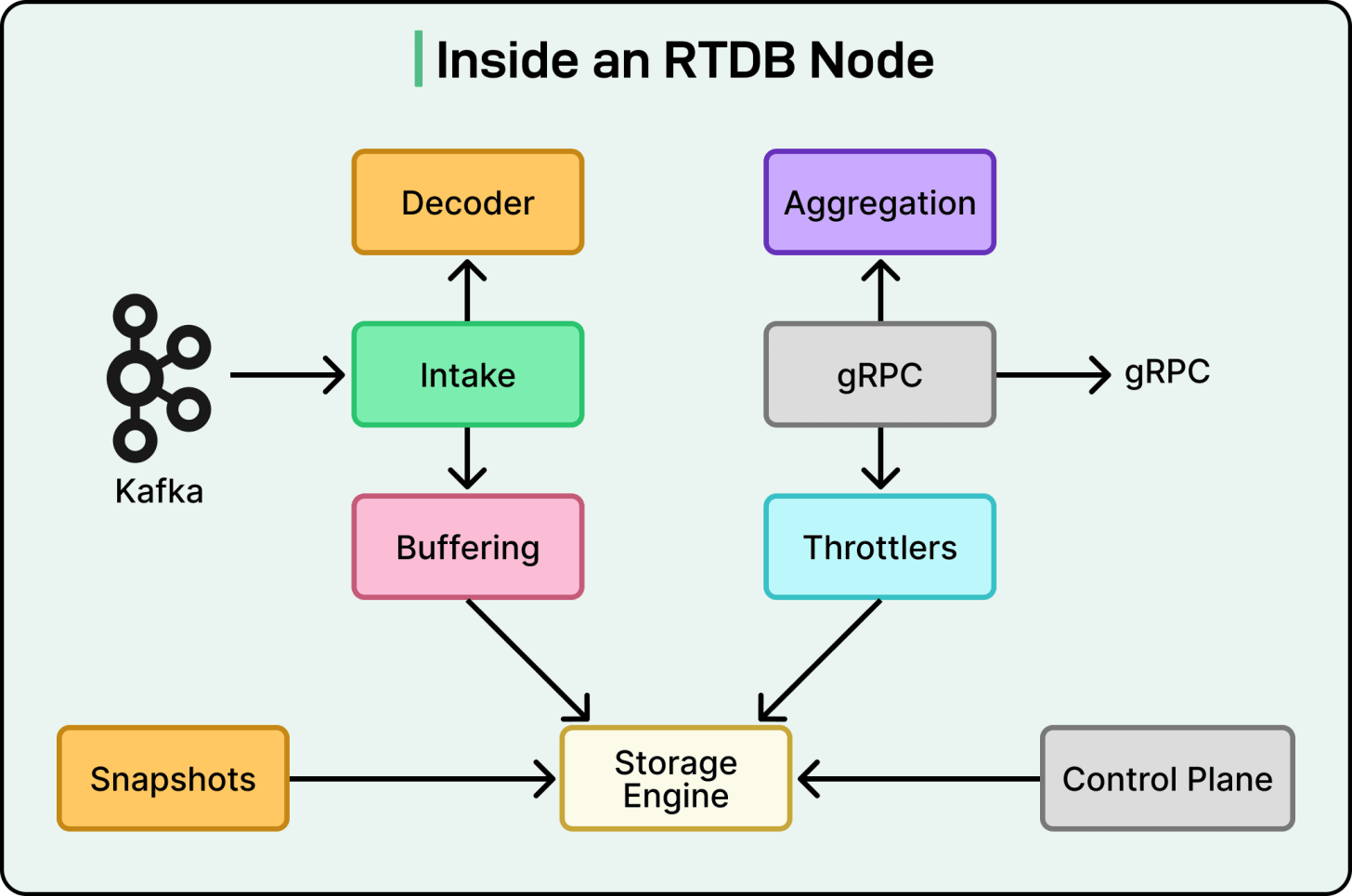Build a more sustainable on-call experience (Sponsored)
Keeping your systems reliable shouldn’t come at the expense of your team. This practical guide from Datadog shows how to design sustainable on-call processes that reduce burnout and improve response.
Get step-by-step best practices so you can:
Cut alert noise with signal-based monitoring
Streamline response with clear roles and smarter escalations
Design rotations that support recovery and long-term sustainability
Disclaimer: The details in this post have been derived from the details shared online by the Datadog Engineering Team and the P99 Conference Organizers. All credit for the technical details goes to the Datadog Engineering Team. The links to the original articles and sources are present in the references section at the end of the post. We’ve attempted to analyze the details and provide our input about them. If you find any inaccuracies or omissions, please leave a comment, and we will do our best to fix them.
In the world of cloud monitoring, Datadog operates at a massive scale. The company’s platforms must ingest billions of data points every single second from millions of hosts around the globe.
This constant flow of information creates an immense engineering challenge: how do you store, manage, and query this data in a way that is not only lightning-fast but also cost-effective?
For the Datadog Engineering Team, the answer was to build their own solution from the ground up.
In this article, we will understand how the Datadog engineering team built Monocle, their custom-built time series storage engine to power their real-time metrics platform. This article analyzes the technical decisions and clever optimizations behind the database.
Move faster with AI: Write code you can trust (Sponsored)
AI is speeding things up, but all that new code creates a bottleneck — who’s verifying the quality and security? Don’t let new technical debt and security risks slip past. Sonar’s automated review gives you the trust you need in every line of code, human- or AI-written.
With SonarQube, your team can:
Use AI without fear: Get continuous analysis for quality and security.
Fix issues early: Detect and apply automated fixes before you merge.
Maintain your standards: Ensure all code meets your team’s quality bar, every time, for long-term code health.
Get started with SonarQube today to fuel AI-enabled development and build trust into all code.
High-Level Metrics Platform Architecture
Before diving into the custom database engine, it is important to understand where it fits.
Their custom engine, named Monocle, is just one specialized component within a much larger “Metrics Platform.” This platform is the entire system responsible for collecting, processing, storing, and serving all of its customer metrics.
The journey of a single data point begins at the “Metrics Edge.” This component acts as the front door, receiving the flood of data from millions of customer systems. From there, it is passed to a “Storage Router.” Just as the name suggests, this router’s main job is to process the incoming data and intelligently decide where it needs to be stored.
This is where Datadog’s first major design decision becomes clear.
The Datadog Engineering Team recognized that not all data queries are the same. An engineer asking for a performance report from last year has very different needs than an automated alert checking for a failure in the last 30 seconds. To serve both, they split their storage into two massive, specialized systems.
The first system is the Long-Term Metrics Storage. This system is like a vast historical archive. It is built for heavy-duty analytical queries, where an engineer might want to analyze a performance trend over many months or even years.
The second system is the Real-Time Metrics Storage, which is the primary focus of this article. This system is a high-speed, high-performance engine that holds only the most recent data, roughly the latest 24 hours. While that might not sound like a lot, this system handles the vast majority of the platform’s workload: 99% of all queries. These are the queries that power Datadog’s live dashboards and critical, automated monitors. In other words, when a user sees a graph on their screen update in real-time, this is the system at work.
A time series data point has two parts:
The Data: This is the actual timestamp and the value being measured. For example [12:00:01 PM, 85.5].
The Metadata: These are the labels, or “tags,” that describe what the data is, such as service:api, host:server-10, or region:us-east-1.
The Datadog Engineering Team made the critical decision to store these two parts in separate, specialized databases:
The Index Database stores only the tags (the metadata). Its only job is to be incredibly fast at finding data. When a user asks, “Show me the CPU for all services in us-east,” this index database instantly finds all the unique data streams that match those tags.
The Real-Time Timeseries Database (RTDB) stores only the timestamps and values. It is a highly optimized storage that, after getting the list of streams from the Index Database, just retrieves the raw numbers.
Using Kafka
Perhaps the most unique architectural decision the Datadog Engineering Team made is how their database clusters are organized. In many traditional distributed databases, the server nodes (the individual computers in the cluster) constantly talk to each other. They “chatter” to coordinate who is doing what, to copy data between themselves (a process called replication), and to figure out what to do if one of them fails.
Datadog’s RTDB nodes do not do this.
Instead, the entire system is designed around Apache Kafka. Here, Kafka acts as a central place where all new data is written first before it even touches the database. This Kafka-centric design is the key to the cluster’s stability and speed.
See the diagram below that shows an RTDB cluster and the role of Kafka:
The Datadog Engineering Team uses Kafka to perform three critical functions that the database nodes would otherwise have to do themselves.
First is Data Distribution. The data in Kafka is organized into “topics” (like metrics), which are split into smaller logs called “partitions.” The team designed the system in such a way that each RTDB database node is assigned its own specific set of partitions to read from. This neatly divides the billions of incoming data points without the nodes ever needing to coordinate.
Second, Kafka acts as the Write-Ahead Log (WAL). This is a standard database concept for ensuring data safety. By using Kafka as the WAL, Datadog creates a “single source of truth.” If an RTDB node crashes due to a hardware failure, no data is lost. When the node restarts, it simply reconnects to Kafka, finds its last known reading position, and catches up on all the data it missed.
Third, Kafka handles Replication. To prevent data loss, you must have copies of your data in different physical locations. The team leverages Kafka’s built-in replication, which automatically copies the data partitions to different data centers (known as Availability Zones). This provides robust disaster recovery right out of the box.
Monocle: The Custom Built Engine in Rust
At the heart of each RTDB node is Monocle, Datadog’s custom-built storage engine. See the diagram below:
This is where the team’s pursuit of performance gets truly impressive. While earlier versions of the platform used RocksDB, a popular and powerful open-source database engine, the team ultimately decided to build its own. By creating Monocle from scratch, they could tailor every single decision to their specific needs, unlocking a new level of efficiency.
Monocle is written in Rust, a modern programming language famous for its safety guarantees and “C-like” performance. It is built on Tokio, a popular framework in the Rust ecosystem for writing high-speed, asynchronous applications that can handle many tasks at once without getting bogged down.
The Core Data Model: Hashing Tags
Monocle’s key innovation is its simple data model. As mentioned, a time series is defined by its tags, like “system.cpu.user”, “host:web-01”, and “env:prod”. This set of tags is what makes a series unique. However, these tag sets can be long and complex to search.
The Datadog Engineering Team simplified this dramatically. Instead of working with these complex strings, Monocle hashes the entire set of tags for a series, turning it into a single, unique number. The database then just stores data in a simple map:
(Organization, Metric Name, Tag Hash) -> (A list of [Timestamp, Value] pairs)This design is incredibly fast because finding all the data for any given time series becomes a direct and efficient lookup using that single hash. The separate Index Database is responsible for the human-friendly part: it tells the system that a query for env: prod corresponds to a specific list of “Tag Hashes.”
Inside Monocle
Monocle’s speed comes from two main areas: its concurrency model and its storage structure.
Monocle uses what is known as a “thread-per-core” or “shared-nothing” architecture. You can imagine each CPU core in the server has its own dedicated worker, which operates in total isolation. Each worker has its own data, its own cache, and its own memory. They do not share anything.
When new data comes in from Kafka, it is hashed. The system then sends that data to the specific queue for the one worker that “owns” that hash. Since each worker is the only one who can ever access their own data, there is no need for locks, no coordination, and no waiting. This eliminates a massive performance bottleneck common in traditional databases, where different threads often have to wait for each other to access the same piece of data.
See the diagram below:
Monocle’s storage layout is a Log-Structured Merge-Tree (LSM-Tree). This is a design that is extremely efficient for write-heavy workloads like Datadog’s.
Here are the main concepts associated with LSM Trees:
Memtable: All new data is batched in memory in a structure called a Memtable.
Flushing: When the Memtable is full, it is “flushed” to disk as a complete, read-only file. The system never goes back to modify old files.
Compaction: Over time, a background process called compaction tidies up by merging these small files into larger, more organized ones.
The Datadog Engineering Team added two critical optimizations to this design:
Arena Allocator: Normally, when a Memtable is flushed, the database would have to free millions of tiny objects from memory, which is a slow process. Monocle uses a custom arena allocator. This means the Memtable gets one giant chunk of memory (an arena). When it is done, the entire chunk is freed all at once, which is vastly more efficient.
Time-Based File Pruning: Since 99% of queries are for recent data, Monocle takes advantage of this. Each file on disk has a known time range (for example, 10:00 AM - 10:10 AM). When a query comes in for the last hour, Monocle can instantly prune (ignore) all the files that are not from that time window. This reduces the number of files it has to read to find the answer.
Staying Fast Under Pressure
Handling so many queries with the “thread-per-core” design creates a unique challenge.
Since a query is fanned out to all workers, it is only as fast as its slowest worker. If one worker is busy performing a background task, like a heavy data compaction, it can stall the entire query for all the other workers. This is a classic computer science problem known as head-of-line blocking.
To solve this, the team built a two-layer system to manage the query load and stay responsive.
The first layer is Admission Control. This acts as a simple “gate” at the front door. If the system detects it is under extreme load (for example, it is falling behind on reading data from Kafka or is low on memory), this gate will simply stop accepting new queries. This protects the database from being overwhelmed.
The second is a smarter Cost-Based Scheduling system. This layer uses a well-known algorithm called CoDel (Controlled Delay) to actively manage latency. It can prioritize queries based on their cost (how much work they need to do) and ensure that even under heavy, unpredictable query bursts, the database remains responsive and does not grind to a halt.
Conclusion
The Datadog Engineering Team’s work on Monocle is far from over. They are already planning the next evolution of their platform, which involves two major changes.
Smarter Routing: The current system, while effective, is relatively static. The team is developing a dynamic, load-balancing system that will allow the cluster to move data around in real-time. This would let the database automatically adapt to query “hot spots,” for instance, when many engineers are suddenly querying the same small set of metrics during an incident.
Colocate Points and Tags: This is a fundamental shift. The team plans to merge their two separate databases (the Index Database and the RTDB ) into a single, unified system. Instead of just storing tag hashes, the new database will store the full tag strings right alongside their corresponding timestamps and values.
To achieve this, the team will move to a columnar database format.
In a columnar database, data is stored by columns instead of rows. This means a query can read only the specific tags and values it needs, which is a massive speedup for analytics.
This is a complex undertaking that will likely require a complete redesign of their “thread-per-core” model, but it highlights Datadog’s drive to push the boundaries of performance.
References:
Timeseries Storage at Ludicrous Speed
Evolving our real-time time series storage again: Built in Rust for performance at scale
SPONSOR US
Get your product in front of more than 1,000,000 tech professionals.
Our newsletter puts your products and services directly in front of an audience that matters - hundreds of thousands of engineering leaders and senior engineers - who have influence over significant tech decisions and big purchases.
Space Fills Up Fast - Reserve Today
Ad spots typically sell out about 4 weeks in advance. To ensure your ad reaches this influential audience, reserve your space now by emailing sponsorship@bytebytego.com.







